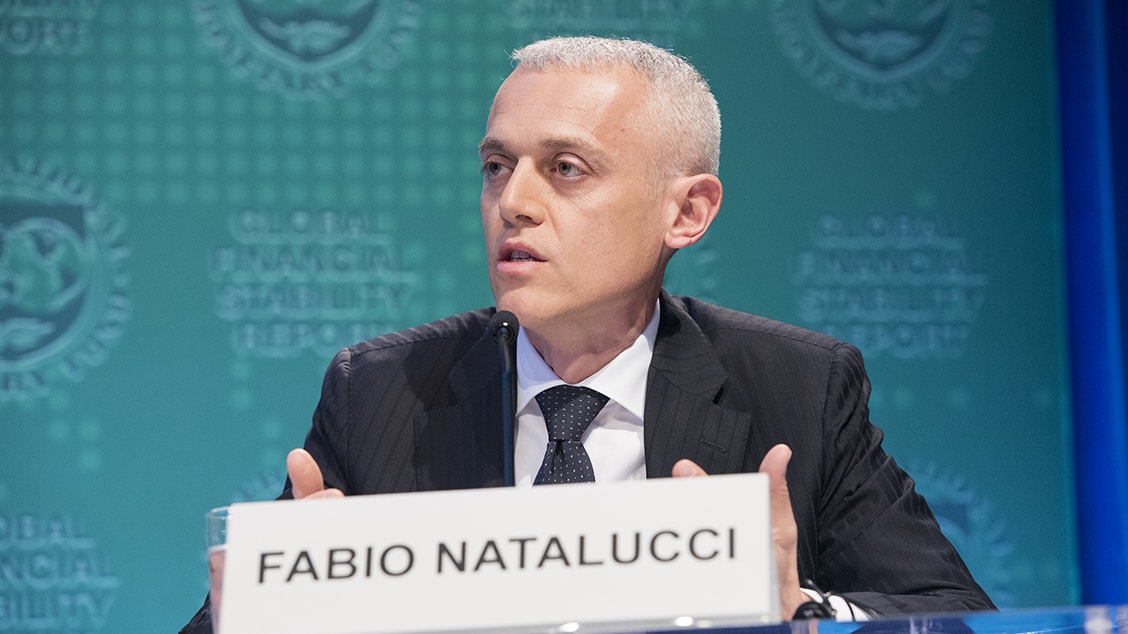IMF Monetary and Capital Markets Deputy Director Fabio Natalucci sat down with Global Finance on the sidelines of COP28 to discuss the debt constraints facing developing countries that need green financing.
Global Finance: Could you give us your feeling on these first few days of COP28?
Fabio Natalucci: Well, I think the COP presidency was quite ambitious from the beginning, and I think they have been quite successful in terms of action. For example there is Loss and Damage fund that was a very challenging issue but is now on track with new pledges, the new $30 billion Alterra fund in conjunction with the private sector. The details remain to be seen but this is a relatively large number. There’s also been a number of pledges like tripling renewable energy production… It seems overall the main theme, or the core of the summit, has been climate finance and how to bring private capital to the table. This is the main challenge now.
According to our estimates, climate mitigation investment in [emerging markets and developing economies] EMDEs need to increase to $2 trillion a year between now and 2030, and between 80% and 90% of that needs to be financed by the private sector, up from the current 40%. In terms of flows, it is five times the current flows. If you look at total investment in these countries, it’s a four-times increase, from 3% to 12%. However you slice it there needs to be a lot more private capital with two extra considerations: One is that, coming out of Covid-19 – the level of debt is high everywhere, but also the fact the external financing costs are higher in EMDEs as well since central banks have sharply raised interest rates. Financing cost for emerging markets as a bloc has increased. So, not only is there not a lot of public money available, it’s also expensive.
Global Finance: COP28 has yielded some impressive announcements but now the devil is in the details right?
Fabio Natalucci: I think one important point that is starting to sink in is that we need more than just debt. Some countries have a lot of debt already so to maximize the limited amount of public money that is available, we need other instrument so equity, grants, guarantees… and that ties back to the discussion about what multilateral development banks can do and how then can optimize the use of their balance sheets. Instruments other than debt, I think, generate more ability for the public sector to mobilize. Then the details we will see… but at least the general direction in terms of announcements, scale and what is being discussed seems quite promising.
Global Finance: Why is it so important that the private sector comes on board?
Fabio Natalucci: In terms of investment projections, between 80% to 90% need to come from the private sector. So how to incentivize? In some case it’s a matter, I think, of better understanding the countries. The Network for Greening the Financial System (NGFS), of which the IMF is an active observer, published a report on blended finance where we try to explain the ecosystem, who are the main players, different objectives, mandates, tools… and one of the things has come across is that sometimes there’s a knowledge gap or perception gap between public and private sector. Another barrier is that countries need to have climate policies in place, like carbon pricing and what we call the “climate information architecture”, meaning you need data – high quality, comparable, consistent data – otherwise the private sector cannot measure neither the risk nor the opportunities, as well as disclosures. We also need to have taxonomies, particularly transition taxonomies for emerging markets, it’s important. And sometimes barriers have nothing to do with climate like the investment grade for EMs or, from the project side, the barrier is sometimes that there are not enough projects. There is money, but nowhere to invest. And finally, we need to foster risk mitigation and diversification—more risk-sharing between public and private sector.
Global Finance: What do you hope will be the outcome of this COP?
Fabio Natalucci: My hope is that we realize that in this bigger picture we need more private money. I think the time horizon where this needs to be fixed, or it’s going to be more expensive and even more challenging to fix, is very narrow. It’s a global problem. It cannot be solved by individual countries or institutions; it has to be solved by everyone. But also don’t turn perfection into an enemy of the good. I used to work at the FED before and during the financial crisis, the strategy that we were told to use was a “spaghetti strategy” – so you throw and see what sticks and sometimes what sticks in one country won’t stick in another country. So yes, you need to standardize products, projects, but it’s also important to keep in mind what’s on the ground. Different countries have different challenges.




